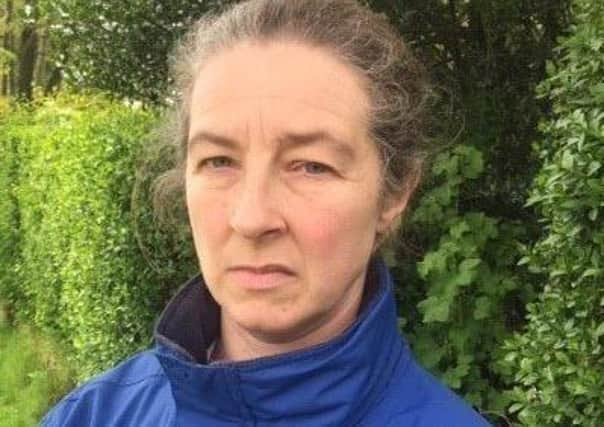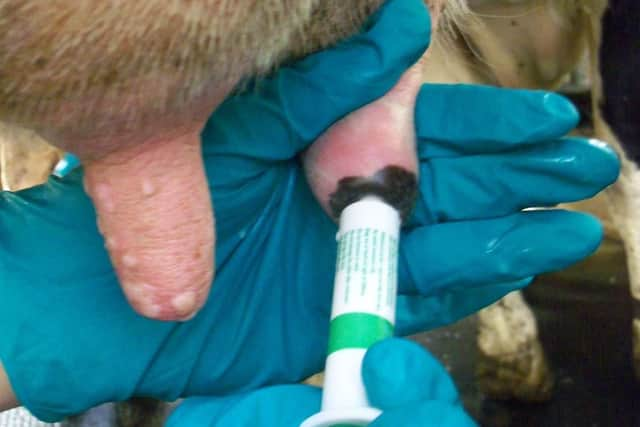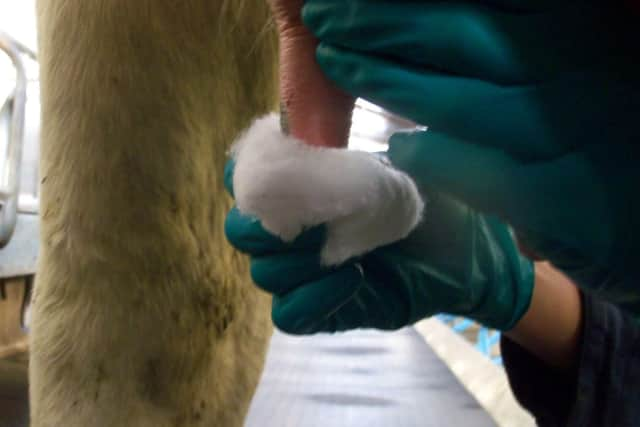How to dry off your dairy cows


Effective dry cow management should address several key areas namely dry cow treatment, length of dry period, body condition and nutrition of the dairy cow.
Research has shown that a dry period of at least 60 days is the most economical and optimum for health, fertility and milk production. Dairy cows which are dry for fewer than 40 days will have a reduced milk output of at least 250 kgs milk in the following lactation.
Advertisement
Advertisement
It is very important to consider the drying off treatment, and from January 2022 dairy farmers will be required to move away from blanket dry cow therapies and adopt a more selective approach based on infection levels within individual cows.


Reducing antibiotic usage, as well as being a potential cost saving, is aimed at slowing the development of antimicrobial resistance (AMR).
Jane continues: “Selective dry cow therapy involves administering a dry cow tube only to cows with infection during the lactation.
“The remaining cows will receive an internal teat sealant only as a preventative against infection getting into the udder during the dry cow period.”
Advertisement
Advertisement
The process has already been adopted on many dairy farms in Northern Ireland with great success.


However, it is not without risk and therefore it is vital that the process is properly planned and administered with the help of your adviser and vet.
Jane said: “It cannot be over emphasised how important milk recording is for the successful implementation of selective dry cow therapy on your farm.”
At the CAFRE Greenmount Dairy Centre, milk recording highlights cows with somatic cell counts (SCC) over 200,000 in any of last three recordings and they are treated with an antibiotic tube plus teat sealant. Cows identified with SCC less than 200,000 receive only a teat sealant.
Advertisement
Advertisement
Jane said: “Reduce the amount of concentrates fed for one week before drying off cows that are yielding more than 10 litres of milk per day. Once per day milking should not be practised in order to reduce yields as this can increase the incidence of mastitis.”
In an ideal situation, cows which have been selected for drying off should be milked, removed from the herd, put through a clean milking parlour again and dry cow therapy applied. This is to minimise the risk of infection during the drying off procedure.
All four teats should be disinfected with surgical spirits. If using dry cow tubes, start at the most distant teats and then the nearest ones to avoid contamination.
When the tube is inserted into each teat, depress plunger and massage teat upwards. If using a teat sealant product, follow a similar procedure but do not massage the teats. Then it should be ensured that cows are made to stand for at least 30 minutes to ensure closure of the teat canal.
Advertisement
Advertisement
The cow’s udder is very susceptible to infection after drying off and therefore the cow should be kept in a clean area. The udder should be checked regularly for any secretions. Grazing dry cows in wooded areas during late summer should be avoided as they may be susceptible to dry cow mastitis (felon) due to the greater number of flies in the area at this time of year.
The dry period is also a useful time to administer routine vaccinations, parasite controls and boluses as there is no danger of milk contamination. Cow’s feet should be examined and treated accordingly.
The drying off date should be recorded and the quantity and type of antibiotic used noted in a veterinary record.
Care taken with drying off and the dry cow period will pay dividends in the subsequent lactations. If you would like further information on drying off treatments and the effective use of milk recording please contact your local CAFRE dairying adviser or discuss with your local veterinary surgeon.